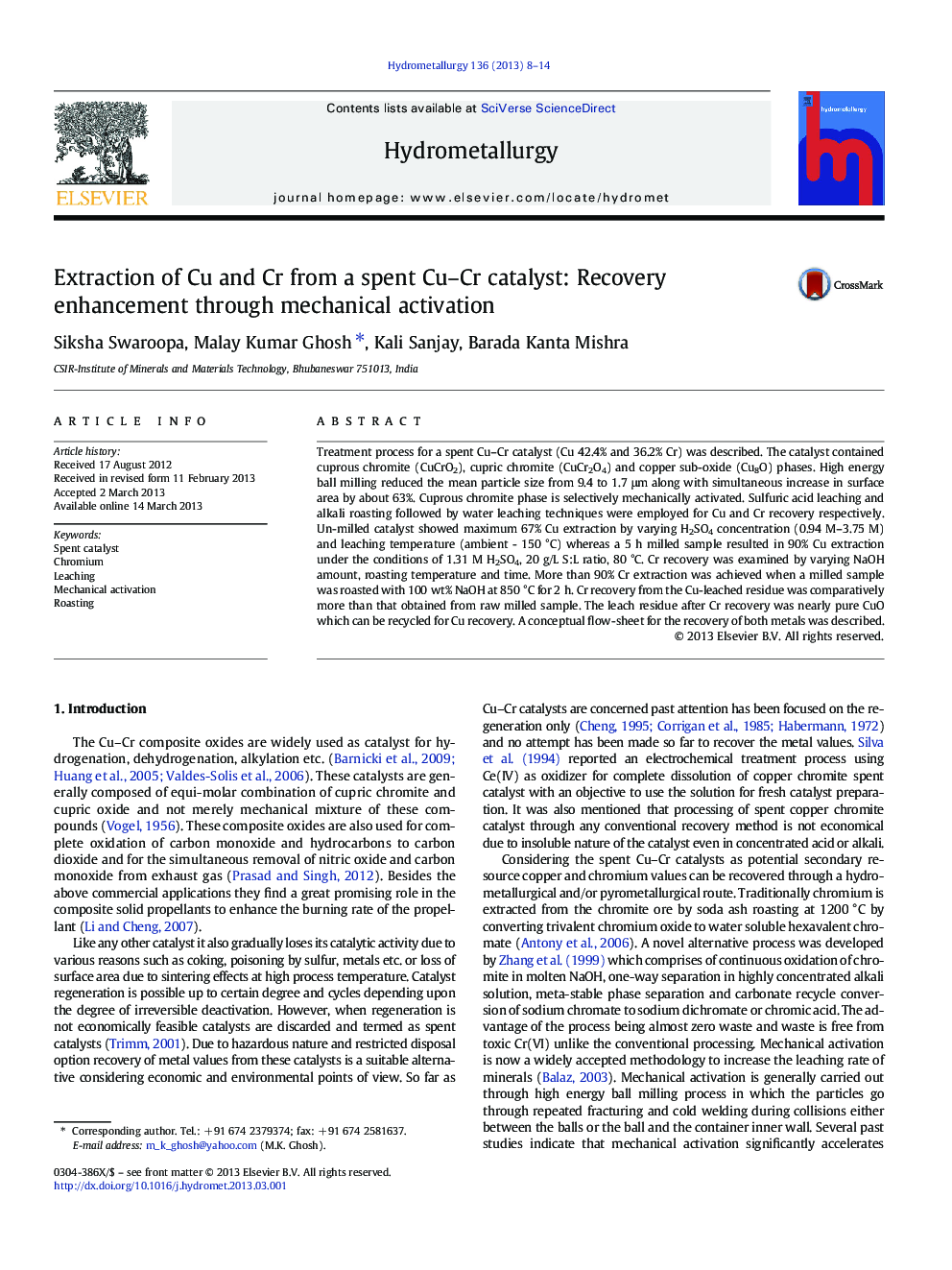| Article ID | Journal | Published Year | Pages | File Type |
|---|---|---|---|---|
| 212318 | Hydrometallurgy | 2013 | 7 Pages |
•Selective extraction of both Cu and Cr from a spent Cu–Cr catalyst•Mechanical activation had enhanced the metal extraction significantly•Cr could be quantitatively extracted by NaOH roasting at 850 °C•Cr recovery from Cu-leached residue is more than that from the untreated sample•Conceptual flow-sheet for the total processing of Cu–Cr spent catalyst is proposed
Treatment process for a spent Cu–Cr catalyst (Cu 42.4% and 36.2% Cr) was described. The catalyst contained cuprous chromite (CuCrO2), cupric chromite (CuCr2O4) and copper sub-oxide (Cu8O) phases. High energy ball milling reduced the mean particle size from 9.4 to 1.7 μm along with simultaneous increase in surface area by about 63%. Cuprous chromite phase is selectively mechanically activated. Sulfuric acid leaching and alkali roasting followed by water leaching techniques were employed for Cu and Cr recovery respectively. Un-milled catalyst showed maximum 67% Cu extraction by varying H2SO4 concentration (0.94 M–3.75 M) and leaching temperature (ambient - 150 °C) whereas a 5 h milled sample resulted in 90% Cu extraction under the conditions of 1.31 M H2SO4, 20 g/L S:L ratio, 80 °C. Cr recovery was examined by varying NaOH amount, roasting temperature and time. More than 90% Cr extraction was achieved when a milled sample was roasted with 100 wt% NaOH at 850 °C for 2 h. Cr recovery from the Cu-leached residue was comparatively more than that obtained from raw milled sample. The leach residue after Cr recovery was nearly pure CuO which can be recycled for Cu recovery. A conceptual flow-sheet for the recovery of both metals was described.
Graphical abstractConceptual flow-sheet for Cu and Cr extraction from Cu–Cr spent catalyst.Figure optionsDownload full-size imageDownload as PowerPoint slide
